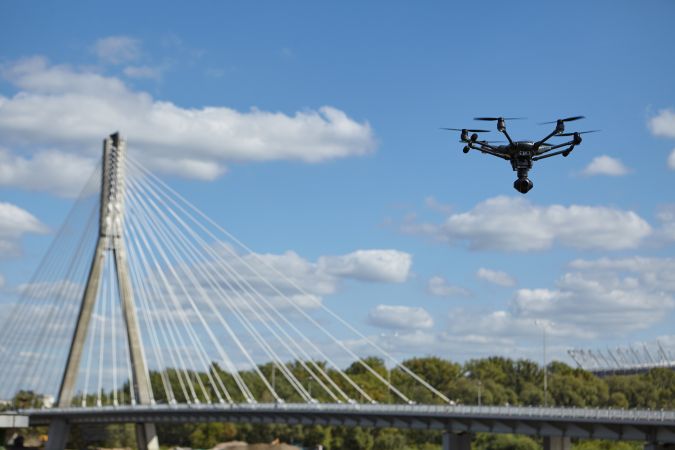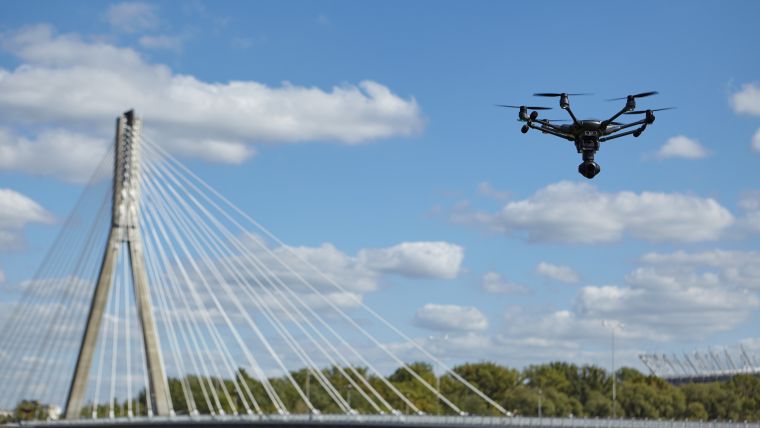Reimagining Bridge Inspections through the Lens of Digital Twins
Transport Departments and Agencies Benefit from Improved Data Management and Sharing
Digital twins provide departments of transport (DOTs) and agencies with more trustworthy data about bridges, leading to safer, less expensive, more timely and more accurate inspections. Drones play an important role in capturing the data to build these twins.
Bridges are a key part of any transportation network, and maintaining these infrastructure assets is important to ensure public safety. To ensure that bridges are safe for public use, owners and engineers need all their data to be easily available, up to date and shareable with all stakeholders. Inspections that gauge the structural integrity of bridges, as well as information gathered during these inspections, give bridge owners and engineers the necessary data to plan for maintenance, rehabilitation and bridge replacement.
Complexity
The problem for bridge owners is that traditional visual inspections are labour intensive, can require expensive equipment, may present safety risks and can be inaccurate and error prone, depending on accessibility and reporting methods. This makes it difficult to collect data, which is problematic because a lack of detailed understanding of historical change can increase the time and cost of inspection activities as well as adversely impacting the movement of the general public. Moreover, in some countries, new regulatory compliance rules and associated reporting requirements add another layer of complexity.
Some of Bentley’s most innovative users are now reimagining inspections through the lens of digital twins – digital representations of a physical asset, process or system as well as the engineering information that allows its performance to be understood and modelled. A digital twin can combine data from continuous surveys, photogrammetry, Lidar and sensors, and track changes to assets on a timeline. This enables owners to view the digital representation of the infrastructure asset and related real-world conditions over time. As DOTs and agencies are being pressed to show the most effective use of their limited funding, taking advantage of digital twins can provide for safer, less expensive, more timely and more accurate inspections. Digital twins allow owners and engineers to track historical changes and understand information such as the exact size of cracking, corrosion or section loss, rather than trying to determine this information by manually assessing images captured over time.
Cost savings
In the USA, agencies such as the Minnesota DOT (MNDOT) have achieved savings of as much as 40% by using drones to assist with inspections. Because bridges have such a long lifecycle, often up to 75-100 years, it is important to track changes to the structures over time. MNDOT found that by deploying drones and having a digital twin, it was possible to monitor the changes over time and have a holistic view of the bridge. In particular, seeing past inspections laid on top of the current data can improve efficiency and help predict the future.
There is great opportunity for agencies to use unmanned aerial vehicles (UAVs or ‘drones’) to complement and augment standard and in-field inspections. The data from these inspections can be reviewed quickly and easily in the office by viewing a time-lapse comparison of detailed changes, annotating specific areas of concern and noting anything that needs to be specifically reviewed in the field. Field crews can see all the inspector’s notes right on the structure, which is more visual, more accurate and more efficient. All of this is geared towards saving costs, avoiding risks and reducing the time required for inspections.

Innovative ideas
Digital twins help bridge owners to take advantage of innovative ideas, such as the concept of remote inspections. Through a digital twin of an asset, along with immersive inspection capabilities in Microsoft HoloLens, inspectors can conduct significant parts of the inspection while in the office. This reduces the time spent in the field, which makes the overall inspection quicker, safer, more efficient and less costly. A digital twin also provides flexibility to conduct more in-depth inspections without having to schedule expensive equipment and labour for that purpose. While increasing safety is the ultimate goal, applying digital twins over many large, complex or signature bridges can also lead to significant savings.
Another key benefit of the digital twin is the reality mesh. This richer visualization layer adds yet another dimension to stakeholder understanding of the infrastructure and surrounding topography. As agencies use drones to assist with their bridge inspections, the photos, videos and other data they capture can be used to produce a high-resolution reality mesh of the bridge. When combined with other relevant data, this provides a great digital twin representation, whether on or off the network, above ground or below ground. Recording those reality meshes over time can likewise provide better insights into changes within the structures. Additionally, using reality meshes for inspections can significantly decrease the amount of time inspectors have to spend in the field.
In summary, utilizing digital twins and technology including UAVs to collect, process, store and analyse large amounts of data can reduce time and costs while increasing the quality of inspections. The technology can improve safety for inspectors and the public at large, and help to preserve bridge infrastructure into the future.

Value staying current with geomatics?
Stay on the map with our expertly curated newsletters.
We provide educational insights, industry updates, and inspiring stories to help you learn, grow, and reach your full potential in your field. Don't miss out - subscribe today and ensure you're always informed, educated, and inspired.
Choose your newsletter(s)
























